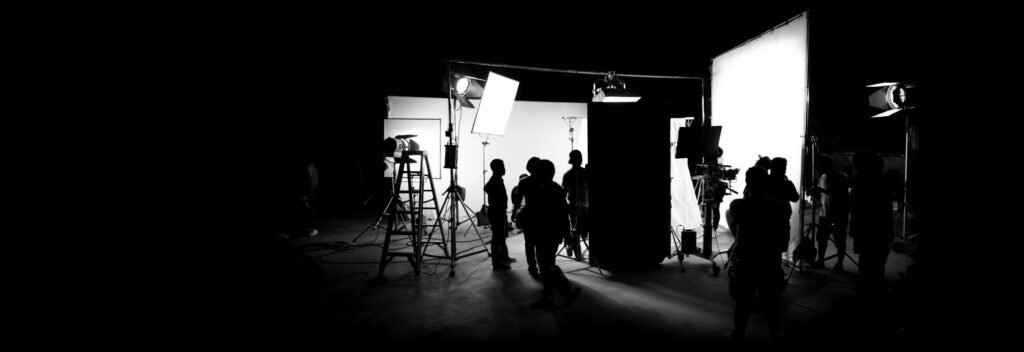Designer and filmmaker Saul Bass said, “The most stimulating source for a solution to a problem comes from the problem itself.” Similar to an acorn, which holds within it the complete set of blueprints needed to create an oak tree, an untapped idea is an equation, that, with the right amount of cultivation, can be transfigured into a successful finished product. For David Lynch, this process—the making—comes easy, and is vital. It’s what he’s been doing from the jump, and the result is a body of work that is simultaneously disturbing and beautiful, perplexing and liberating.
Before setting his sights on film, Lynch wanted to be a painter. He was serious about art from a young age and had a studio space in high school which he visited so regularly that his parents mistakenly believed he was out partying. He was living “the art life” as he calls it, and in the sixties, he went to college for painting at the Pennsylvania Academy of Fine Arts. It was here that he first noticed “a little wind” in a painting he was working on, and the idea of filmmaking occurred to him. After creating a few shorts in the early seventies, he left Pennsylvania and moved to the west coast to study filmmaking at the AFI Conservatory. It was here that he made his debut feature Eraserhead, which would become a cult hit and put him on the map.
In the 2016 documentary David Lynch: The Art Life, we get a glimpse into Lynch’s process and a taste of what spurs him to create. As he declares, “Every time you do something, like a painting or whatever, you go with ideas, and sometimes the past can conjure those ideas and color them.” For someone whose films are known for their dark mystery, surrealism, and dream logic, Lynch’s work is the product of a very specific need to problem-solve—that is, the necessity to unearth the hidden mysteries of his own psyche.
In The Art Life as well as the part-biography, part-memoir Room to Dream, Lynch recalls stories from his past, and the pieces start to fit. It’s clear that Lynch’s memories are the primary foundation for his work, and his artistic pursuits are a form of exorcism. In a story, which will ring familiar to any Lynch fan, the director reveals a disturbing childhood memory in which he and his brother witnessed a bloody, naked woman walking through their nighttime suburban neighborhood. This haunting tableau stuck with Lynch for years, and eventually found its way to the screen in 1986’s Blue Velvet. Similar stories of traumatized women in peril can be found throughout Lynch’s oeuvre.
Similar to his skill for turning dark recollections into thrilling cinematic moments, Lynch sees setbacks and roadblocks on set as exciting detours to be explored. He has learned to roll with the punches and trust the process, which has resulted in some of the most exciting moments of his career. For instance, Eraserhead, created on a shoestring budget over a grueling four years, encountered a number of puzzles that had to be solved: The sets were built out of scavenged materials that were used and reused; blankets and burlap bags were used for soundproofing; and technical questions were solved by anonymous cold calls to various studios. 2001’s Mulholland Drive, originally intended as a series for television, was eventually seen as unfit for the small screen and was then recrafted and beefed up into the horrific movie masterpiece we know today.
Lynch is a meditator, and it is through this habitual emptying of the mind that he is able to “catch ideas,” a concept he explores in his book Catching the Big Fish, which is all about creativity and consciousness. In 2005, he launched the David Lynch Foundation for Consciousness-Based Education and World Peace, which strives to raise awareness about the benefits of transcendental meditation and its effects on the brain. When one becomes familiar with this side of Lynch, it seems ironic: how can one who produces such provocative, disturbing work be so enlightened? This simultaneous quest for peace and the ability to burrow into the American underworld is a balancing act that Lynch has perfected, and one that brings to mind the Chinese philosophy of yin and yang, a concept revolving around the notion that all things are simultaneously inseparable and contradictory. This mode of thinking is essential to both the creation and understanding of Lynch’s work, which is gorgeous and horrifying, hilarious and tragic.
Like the tiny blue key used to open Pandora’s box in Mulholland Drive, the freeing of the mind and the trust in one’s subconscious is the final piece necessary to fully appreciate the director’s work, which should be seen not as a cryptic riddle to solve but a wondrous mystery to be experienced. This can be difficult for some. As Lynch notes, “I don’t think that people accept the fact that life doesn’t make sense. I think it makes people terribly uncomfortable. It seems like religion and myth were invented against that, trying to make sense out of it.” With his films, paintings, comics, and music, Lynch is asking us to abandon this tendency and take a ride through the thrilling in-between of not knowing. The answer is to realize there are no answers. It’s through this process of letting go, and the rejection of the human desire for resolution, that boosts Lynch’s work to near-spiritual realms. The result is a release from the white-knuckled pursuit of the definitive, and a plunge into the warm waters of possibility.
About the author.
Daniel Nolen is a writer, designer, and performer in New York City. He has written about design, music, film, and theater, and can be found regularly and happily taking in concerts, shows, and exhibitions around the city. He also co-hosts the weekly comedy/variety show Cast Offs, every Monday at 8 pm at Club Cumming in the East Village.




